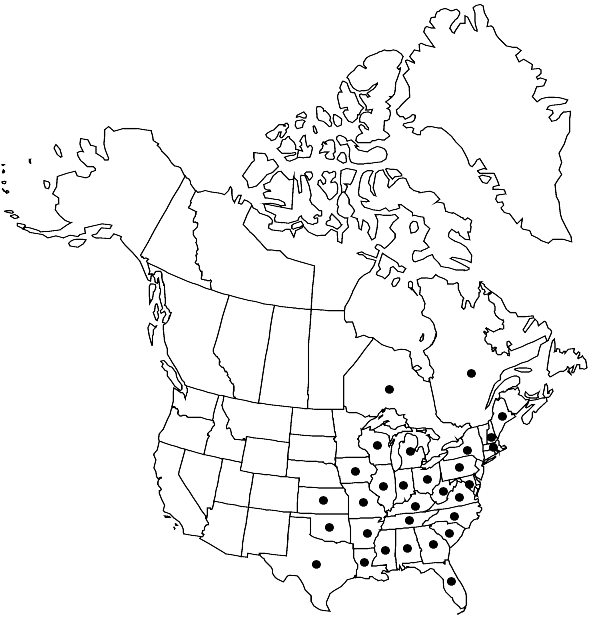Fissidens subbasilaris
Sp. Musc. Frond., 155, plate 39, figs. 6–9. 1801,.
Plants to 12 × 1.5–3.5 mm. Stem branched; axillary hyaline nodules absent; central strand present. Leaves as many as 28 pairs, sometimes ± undulate, oblong, obtuse-apiculate to acute, to 2.4 × 0.3–0.4 mm; dorsal lamina narrowed proximally, ending before or at insertion; vaginant laminae 1/2–2/3 leaf length, acute, ± unequal, minor lamina ending near margin; margin evenly crenulate-serrulate but irregularly serrate distally; costa ending 6–16 cells before apex, covered and obscured above by chlorophyllose cells, taxifolius-type; lamina cells irregularly 2-stratose, smooth, bulging, firm-walled, irregularly rounded-hexagonal, 7.5–10 µm. Sexual condition gonioautoicous and cladautoicous; perigonia gemmiform, axillary, and on short branches; perichaetia on short axillary branches near proximal ends of stem. Sporophytes 1 per perichaetium. Seta 1.5–5.5 mm. Capsule theca 0.8–2.1 mm, erect, radially symmetric or nearly so; peristome taxifolius-type; operculum long rostrate, 0.6–0.9 mm. Calyptra cucullate, smooth, 1.5 mm. Spores 13–18 µm.
Habitat: Particularly around bases of trees, also rocks, mostly limestone, infrequently decaying wood
Distribution

Ont., Que., Ala., Ark., Fla., Ga., Ill., Ind., Iowa, Kans., Ky., La., Maine, Md., Mass., Mich., Miss., Mo., N.H., N.Y., N.C., Ohio, Okla., Pa., S.C., Tenn., Tex., Va., W.Va., Wis., Mexico (San Luis Potosí), Mexico (Tamaulipas)
Discussion
Fissidens subbasilaris is distinguished, even in the field, by a costa obscured by chlorophyllose cells distally, and short perichaetial branches in the axils of proximal leaves. The plants are typically dark-green and often tinged with red.
Selected References
None.
Lower Taxa
No values specified."/2" is not declared as a valid unit of measurement for this property.